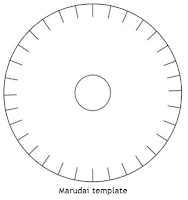Why Is My Kumihimo Braid Uneven on Marudai? Tips for Even Tension with 8+ Strands
.png)
Your Kumihimo braid is likely uneven on the marudai due to inconsistent tension between your hands or among the individual strands. The primary cause is allowing the braiding rhythm or the weight distribution of the tama (bobbins) to become unbalanced. To fix this, focus on maintaining a steady, mirrored pulling motion with both hands and ensuring all strands move with equal resistance. An exception is when using mixed fiber types, which may naturally require different tension management. Key Takeaways Consistent Hand Motion is Crucial: Maintain a mirrored, rhythmic "pull and release" with both hands to create even tension. Balance Your Tama: Ensure all bobbins are equally weighted and hang freely without tangling to prevent uneven strand pull. Practice Proper Posture and Setup: Your physical position relative to the marudai and how you manage strand groups fundamentally affects tension control. Diagnose by Section: Isolate the problem by checking if unevenness o...
